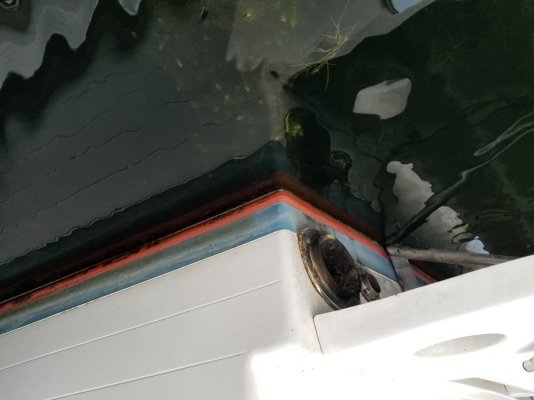Ducatihottie
Senior Member
Morning!
CHB PONDEROSA SINGLE CUMMINS ENGINE
My mechanic asked me if my exhaust is above water or below. He hasn't been aboard yet.
Is this photo my outside exhaust, (and no my boats not floatiing upside down "yet", its just the photo).
That said
1. Does he need to pull my boat out of the water to change my wet exhaust hose?
My survey says..... It has a crack in it and leaks a little water while underway, (and exhaust fumes as well). Not exact wording.
2. Even if it was underwater shouldn't you be able to change it? I assume there's something that prevents water from coming back into the boat via the exhaust?
3. Can't you just cut out the leaky part and splice in new hose?
4. Like some auto hoses, can you just wrap something around the leaky hose like grandpa did to his La Marquise
This will be my most expensive repair job on my survey, (see estimate below).
07/22/2020 Services STBD wet 1 $1,200.00
exhaust hose replacement.
If needed, Haul out additional.
AND NO I won't be doing it myself: )
CHB PONDEROSA SINGLE CUMMINS ENGINE
My mechanic asked me if my exhaust is above water or below. He hasn't been aboard yet.
Is this photo my outside exhaust, (and no my boats not floatiing upside down "yet", its just the photo).
That said
1. Does he need to pull my boat out of the water to change my wet exhaust hose?
My survey says..... It has a crack in it and leaks a little water while underway, (and exhaust fumes as well). Not exact wording.
2. Even if it was underwater shouldn't you be able to change it? I assume there's something that prevents water from coming back into the boat via the exhaust?
3. Can't you just cut out the leaky part and splice in new hose?
4. Like some auto hoses, can you just wrap something around the leaky hose like grandpa did to his La Marquise
This will be my most expensive repair job on my survey, (see estimate below).
07/22/2020 Services STBD wet 1 $1,200.00
exhaust hose replacement.
If needed, Haul out additional.
AND NO I won't be doing it myself: )
Attachments
Last edited:



